A Texas chef once relied on food pantries. Now she's written a cookbook for others who do
JOPPA, Texas -- Chef Amber Williams watched as two dozen youngsters pulled carrots, cabbage and Brussels sprouts from cold soil at Joppy Momma’s Farm, bundled up against 25-degree chill as they filled plastic crates with freshly picked produce. Before long they were all snacking on Williams' veggie-filled cabbage wraps, enjoying the fruit of the land.
Founded in 1872 by emancipated slave Henry Hines, Joppa (pronounced "Joppy") is among the last freedmen towns in Texas, a barren, low-income community of about 2,000 people 15 minutes south of downtown Dallas. Joppy Momma's Farm launched in 2021, aiming to change Joppa's status as a federally declared food desert, with the nearest supermarket miles away.
As her crew prepared the mix of chickpeas, peppers and hearts of palm that would provide the cabbage wrap filling, Williams addressed the kids and their families, who were visiting the farm through their involvement with a local chapter of youth leadership organization Jack and Jill of America.
“Farms like this one are super important because they give people healthy food they wouldn’t otherwise have,” Williams said. “Does anyone see a grocery store? Imagine if you had to walk to the store and then back home with all of your groceries.”
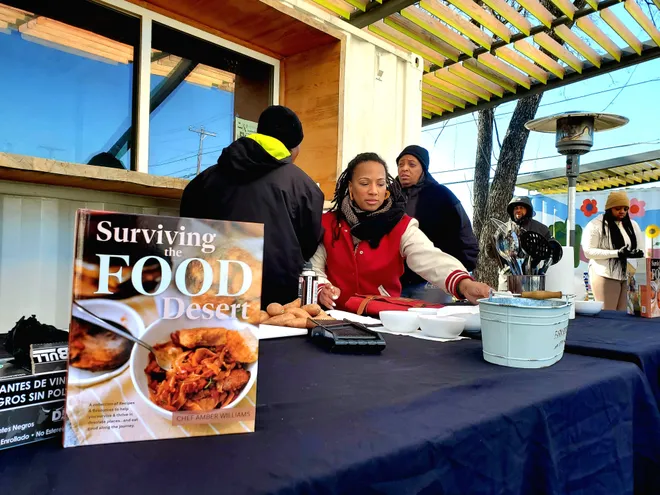
Williams is no stranger to food deserts, having grown up in one herself in Oak Cliff, a South Dallas neighborhood close to Joppa. Food deserts are geographic areas defined by the U.S. Department of Agriculture based on household distances from and access to supermarkets, though researchers argue whether the term adequately captures broader challenges – such as locations in which food may be plentiful but largely unhealthy or unaffordable.
With her recently published cookbook, “Surviving the Food Desert,” she too aims to help address such issues with simple recipes, some designed to be manipulated depending on what goods one has available.
“I wanted to make sure to do that because sometimes these families don’t have much to work with,” Williams said.
Her “kitchen sweep goulash” might be the book’s showcase example of that principle, with numerous protein, starch, vegetable and liquid substitutions noted at bottom.
“That’s meant for you to go to your fridge and toss in anything you’ve got,” Williams said. “It’s customizable for whatever you’ve got on hand.”
The concept of food deserts is as important for the kids to learn as where their food comes from, their parents say.
“They need to understand that not everyone lives like they do,” said Shannon Hart of Dallas suburb Cedar Hill, here with son Zachary, 8, and daughter Zoë, 6.
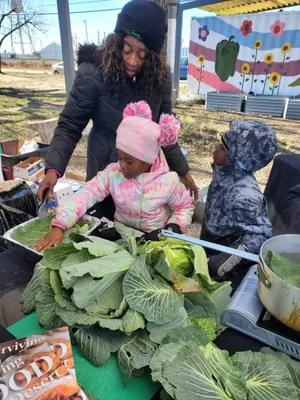
Some researchers prefer terms like “food swamps,” or even “food apartheid,” instead of food deserts. All refer to low-income areas where economic, supply and time constraints challenge residents’ ability to make good nutritional choices.
“What occurs is individuals opt for convenient, less healthy options,” said Thomas Felke, an associate professor of social work at Florida Gulf Coast University in Fort Myers, Florida. “These are areas where obesity and diabetes are most prominent. And when you’re not getting nutrients, your body is going to break down.”
An estimated 19 million U.S. residents were considered to be low access in 2019, the Congressional Research Service said. Meanwhile, about 7% of Dallas' low-income population lives at least a mile from an urban grocery or 20 miles from a rural one, according to USAFacts.org.
Growing up, Williams remembers family meals assembled from food drive boxes.
“That’s one of the things that drives my passion,” she said. “I know what the struggles are. I want to lend my culinary knowledge to the conversation.”
Learning kitchen skills as a child
Williams’ attachment to food began on a kitchen stool, where she perched beside her mom as she cobbled together Cajun and Creole dishes reminiscent of the family’s Louisiana roots. At age 5, Williams said, she was licking bowls clean; by 8, she said, she knew she wanted to be a chef.
“I didn’t grow up on Texas staples,” she said. “It was jambalaya, or red beans and rice. I tell people, I didn’t grow up with fried chicken; I grew up with fried frog legs.”
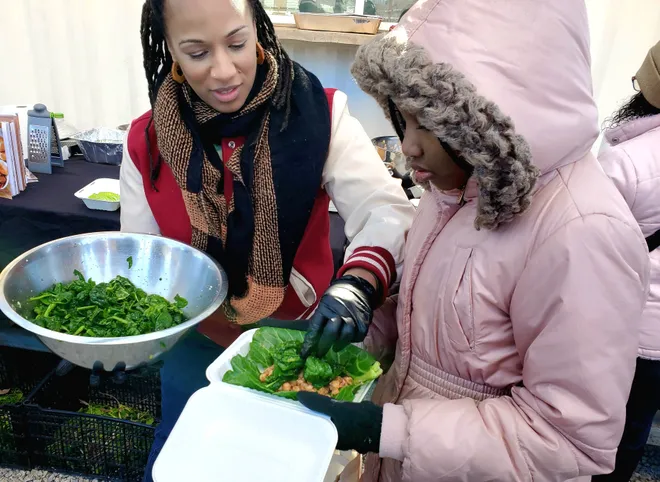
Williams recalls sitting tableside as her mom planned out the family’s upcoming meals, guessing that those experiences informed her skills in menu development.
“I had one of those moms who was extra,” she said. “I remember loving to bring people around the table, watching them eat after you’d cook. I told myself, I want to create those experiences for other people.”
Williams earned a business management degree from Grambling State University in 2011. Several years later, she launched Le Rouge Cuisine, the catering business she operates in Dallas, serving up what she describes as “elevated Creole fusion.”
But when COVID-19 prompted a spate of client cancellations, Williams suddenly found herself struggling to get by. Before long, she said, she was in the pantry lines, revisiting the food boxes of her youth.
That’s how the idea of a cookbook came to be.
The challenges of cooking with food pantry items
Food pantry items can vary widely from week to week, depending on the season, their geographic location, contributions and product costs.
“It depends on what people have to donate and what we can purchase at the prices we can afford,” said Jill Beets of Storehouse New Mexico in Albuquerque, one of the state’s largest pantries.
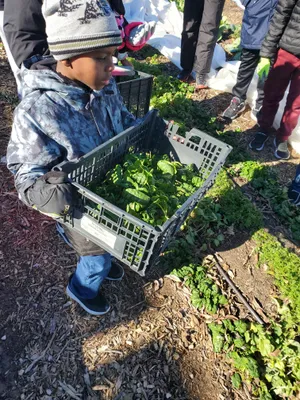
As Williams found herself rummaging through her food pantry boxes, she realized she was equipped with much more knowledge than she had as a child.
“I had the creativity as a chef to play with these things,” she said. “I couldn’t help but think about families that didn’t.”
That’s how her book evolved, with recipes inspired by the items she acquired – things like beans, rice, spaghetti and cornbread. It features selections such as Cinna-Butter Drop Biscuits ("Don't be afraid to use your hands and get dirty," she writes) and Mom's Foil Packet Dinner ("The epitome of making something out of nothing").
The concerns she heard from pantrygoers told her echoed common themes cited by other pantries – the fresh produce they got was sometimes unfamiliar, or that they didn’t know what to do with, say, fresh green beans versus the canned versions they were used to.
“We got pallets of lentils last year, and there was a whole lot of people who didn’t know how to cook them from their dry state,” said Beets, of Storehouse New Mexico. “If you don’t cook them right you can get sort of a belly ache, but they’re super nutritious.”
In such cases, pantry directors might post recipes online to guide clients through the cooking process.
“If people don’t know what to do with it, they’ll just pitch it,” said researcher Jean Butel, who directs a pair of nutrition education programs for low-income populations offered through the University of Hawai’i at Manoa. “We try to provide ways they can use things – like, here’s when it’s ripe, here’s how to cut it or how to cook it. We make sure they not only know what it is but also what they can do to make it more healthy.”
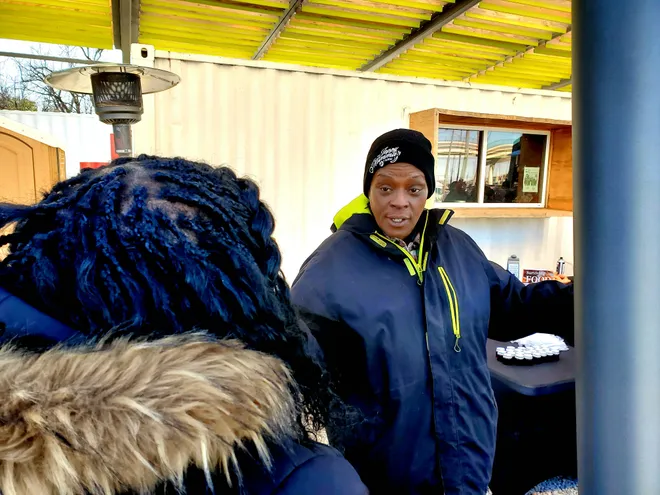
For example, she said, Spam is extremely popular in Hawaii but also high in sodium, so program staff will advise stretching it out – for instance, mixing it with cooked cabbage, so that it becomes part of a larger meal rather than consuming it all at once.
“We try to build skills more than saying, here’s a recipe,” Butel said. “It’s, like, OK, you’ve gotten this food: How can you use it and not waste it? What can you add to it to make it more healthy and complete? We develop and empower people so they can figure it out on their own.”
Planting seeds of knowledge and good health
Back at Joppy Momma’s Farm, founder and executive director Kimberly High explained it was her diagnosis with diabetes that prompted her to start growing her own food. Ultimately, she started the farm and garden on Joppa land passed down by her grandmother and great-grandmother, and said she’s no longer dependent on insulin.
“My older brother died of diabetes,” High told the group. “It’s a deadly disease that we can manage if we just eat better.”
Jermisha Pipkins Lynch of Mansfield, Texas, visiting the farm with 9-year-old daughter, Maya, said it was good for youngsters to learn the value of good nutrition and growing their own vegetables.
“They’re planting seeds here, literally and figuratively,” she said. “I’m pretty sure Maya is going to want to make her own cabbage wraps now.”
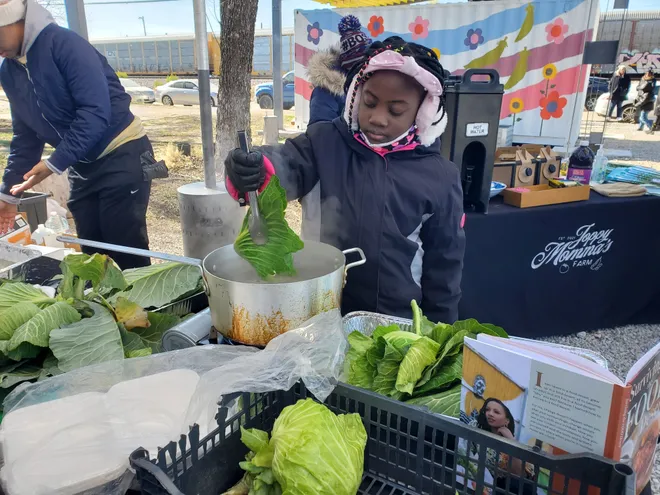
Williams' cookbook is part of a broader, long-term project she envisions to promote healthier eating and creative cooking through educational and culinary resources. She’s already working on the project’s next stage – a low to no-sodium line of spices – and ultimately hopes to create a series of cooking classes.
While the book’s $34.99 price tag might seem hefty for folks on a budget, Williams said her hope is that organizations committed to uplifting families facing healthy food challenges might consider it something worth providing to the clients they serve.
“The corporations are going to have the biggest reach and dollar,” she said. “Imagine if a food bank could put this book into their boxes. If we can give people education and access, we can really level that playing field.”
Disclaimer: The copyright of this article belongs to the original author. Reposting this article is solely for the purpose of information dissemination and does not constitute any investment advice. If there is any infringement, please contact us immediately. We will make corrections or deletions as necessary. Thank you.



